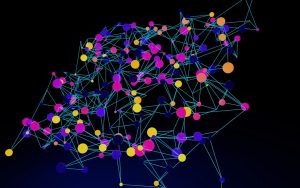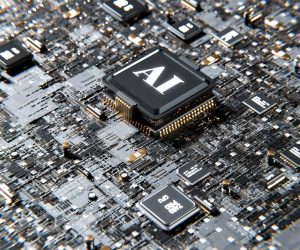Machine Learning: 12 Business Applications Unveiled
Discover the top 12 machine learning applications transforming businesses today. Unlock innovation and gain a competitive edge.
Healthcare and Medical Diagnosis
Improved Diagnostic Accuracy
Machine learning algorithms have significantly enhanced the accuracy of medical diagnoses. By analyzing vast datasets from medical records and imaging, these algorithms can identify patterns and anomalies that might be missed by human practitioners.
This capability is particularly beneficial in fields such as radiology and pathology, where precise image analysis is crucial. The integration of machine learning in diagnostic processes reduces the risk of human error, leading to more reliable and accurate patient outcomes.
Predictive Analytics for Patient Care
Predictive analytics powered by machine learning is transforming patient care by forecasting disease progression and potential health risks.
By evaluating historical patient data and recognizing trends, machine learning models can predict the likelihood of diseases such as diabetes, heart disease, and cancer. This proactive approach enables healthcare providers to implement preventive measures and tailor treatment plans to individual patient needs, ultimately improving patient health and reducing healthcare costs.
Personalized Treatment Plans
Machine learning facilitates the development of personalized treatment plans by analyzing patient-specific data, including genetic information, lifestyle factors, and treatment responses.
This personalized approach ensures that patients receive the most effective therapies tailored to their unique profiles. For instance, in oncology, machine learning can help determine the most suitable chemotherapy regimen based on a patient’s genetic makeup, increasing the chances of successful treatment outcomes.
Streamlining Administrative Processes
Beyond direct patient care, machine learning is also optimizing administrative processes within healthcare systems.
By automating tasks such as appointment scheduling, billing, and patient record management, machine learning reduces the administrative burden on healthcare staff. This efficiency not only saves time and resources but also allows healthcare professionals to focus more on patient care, enhancing the overall healthcare experience.
Early Detection of Diseases
Machine learning models excel in the early detection of diseases by analyzing subtle changes in patient data that may indicate the onset of a condition.
For example, in the case of neurodegenerative diseases like Alzheimer’s, early detection through machine learning can lead to timely interventions that slow disease progression. This capability is vital for improving patient quality of life and reducing the long-term impact of chronic diseases.
Fraud Detection and Security
The Importance of Fraud Detection
Fraud detection is a critical application of machine learning in today’s digital economy.
As financial transactions increasingly move online, the risk of fraudulent activities has surged. Machine learning algorithms can analyze vast amounts of transaction data to identify patterns that may indicate fraudulent behavior.
This proactive approach helps organizations prevent financial losses and maintain customer trust.
Machine Learning Techniques for Fraud Detection
Several machine learning techniques are employed to enhance fraud detection systems. Supervised learning models, such as decision trees and neural networks, are trained on historical data to recognize fraudulent patterns.
Unsupervised learning models, like clustering and anomaly detection, identify outliers in transaction data that could signify fraud. These models continuously learn and adapt, improving their accuracy over time.
Real-time Fraud Detection
Real-time fraud detection is crucial for minimizing the impact of fraudulent activities.
Machine learning models can process transactions as they occur, providing instant alerts when suspicious activity is detected. This capability allows businesses to respond swiftly, blocking transactions or flagging them for further investigation before any damage is done.
Enhancing Security with Machine Learning
Beyond fraud detection, machine learning plays a vital role in enhancing overall security measures.
It can be used to monitor network traffic, identify potential security breaches, and protect sensitive information. By analyzing patterns of behavior, machine learning models can detect unauthorized access attempts and trigger security protocols to safeguard data.
Challenges in Implementing Machine Learning for Fraud Detection
While machine learning offers significant advantages in fraud detection, implementing these systems poses challenges.
High-quality data is essential for training accurate models, and organizations must ensure data privacy and compliance with regulations. Additionally, the dynamic nature of fraud requires continuous model updates and monitoring to maintain effectiveness.
Personalized Marketing and Recommendations
Understanding Personalized Marketing
Personalized marketing leverages data and machine learning algorithms to tailor marketing efforts to individual preferences and behaviors.
By analyzing customer data, businesses can create highly targeted marketing campaigns that resonate with specific audiences, enhancing customer engagement and conversion rates. This approach moves away from one-size-fits-all strategies, offering a more customized experience that can significantly boost brand loyalty.
Role of Machine Learning in Recommendations
Machine learning plays a pivotal role in generating personalized recommendations.
By analyzing vast amounts of data, including past purchases, browsing history, and demographic information, machine learning models can predict what products or services a customer might be interested in. This predictive capability allows businesses to present relevant recommendations to customers, increasing the likelihood of purchase.
Benefits for Businesses
Implementing personalized marketing and recommendation systems offers numerous benefits for businesses.
It enhances customer satisfaction by providing a seamless and relevant shopping experience. Additionally, it increases sales and revenue by driving higher conversion rates.
Businesses can also gain valuable insights into customer preferences and trends, enabling them to refine their offerings and marketing strategies further.
Challenges and Considerations
While personalized marketing and recommendations offer significant advantages, they also present challenges. Privacy concerns are paramount, as businesses must ensure they handle customer data responsibly and comply with data protection regulations.
Moreover, the implementation of sophisticated machine learning models requires substantial investment in technology and expertise. Businesses must balance personalization with privacy to maintain customer trust and loyalty.
Predictive Maintenance in Manufacturing
Understanding Predictive Maintenance
Predictive maintenance is a proactive approach that uses data analysis tools and techniques to detect anomalies in your operations and possible defects in equipment and processes so you can fix them before they result in failure.
In the manufacturing sector, this approach is crucial for maintaining the efficiency and longevity of machinery.
By leveraging machine learning algorithms, manufacturers can predict when a machine is likely to fail, allowing them to schedule maintenance activities at the most opportune times. This not only minimizes downtime but also extends the lifespan of the equipment.
Machine Learning Models Used
Various machine learning models are employed in predictive maintenance, including regression analysis, classification models, and time-series forecasting.
These models analyze historical data from sensors and other monitoring equipment to identify patterns and predict future outcomes.
For instance, regression models can be used to estimate the remaining useful life of a machine, while classification models can help in identifying whether a machine is likely to fail within a certain timeframe. Time-series forecasting is particularly useful in predicting future machine conditions based on past performance data.
Benefits of Predictive Maintenance
Implementing predictive maintenance in manufacturing offers several benefits.
It reduces unexpected equipment failures, thereby minimizing production downtime and maintenance costs. This approach also enhances safety by preventing catastrophic equipment failures that could endanger workers.
Moreover, predictive maintenance contributes to better resource management.
By knowing exactly when a machine needs servicing, manufacturers can optimize their inventory of spare parts and reduce waste. This leads to more sustainable manufacturing practices and improved operational efficiency.
Challenges and Considerations
Despite its advantages, predictive maintenance in manufacturing comes with challenges.
The initial setup requires significant investment in sensors, data storage, and machine learning infrastructure. Additionally, the accuracy of predictions depends on the quality and quantity of data collected.
Manufacturers must also ensure that their workforce is trained to interpret data and act on insights generated by predictive maintenance systems.
Overcoming these challenges requires a strategic approach and a commitment to integrating advanced technologies into existing processes.
FAQ
Q1: What are the cost implications of adopting machine learning use cases in a business?
A1: The cost of adopting machine learning (ML) use cases in a business can vary widely depending on several factors, including the complexity of the application, the scale of implementation, and the existing infrastructure. Initial costs often include investment in data collection and storage solutions, hiring skilled personnel such as data scientists and ML engineers, and purchasing or developing ML software and tools. Additionally, ongoing costs may arise from maintaining and updating ML models, as well as training staff to effectively use these technologies. However, many businesses find that the long-term benefits, such as increased efficiency, improved decision-making, and enhanced customer experiences, outweigh the initial investment. To manage costs, businesses can start with small-scale pilot projects, utilize cloud-based ML services that offer scalable pricing models, and leverage open-source tools to minimize software expenses.
Q2: How accessible are machine learning applications for non-engineers in a business setting?
A2: Machine learning applications are becoming increasingly accessible to non-engineers, thanks to the development of user-friendly platforms and tools. Many ML solutions now offer intuitive interfaces that allow users to interact with models without needing to understand the underlying algorithms. Automated machine learning (AutoML) platforms, for example, enable users to build and deploy models with minimal coding knowledge. Additionally, businesses can leverage pre-trained models and APIs provided by cloud service providers, which simplify the integration of ML capabilities into existing systems. To further enhance accessibility, organizations can invest in training programs to upskill their workforce, ensuring that employees across various departments can effectively utilize ML tools. By fostering a culture of collaboration between technical and non-technical teams, businesses can maximize the impact of ML applications.
Q3: What are the common implementation challenges businesses face when integrating machine learning with existing tools?
A3: Integrating machine learning with existing tools can present several challenges for businesses. One common issue is data compatibility, as ML models require large volumes of high-quality data, which may not be readily available or in a usable format. Data silos and disparate data sources can complicate data integration efforts, necessitating robust data management strategies. Another challenge is ensuring that ML models are compatible with existing software and IT infrastructure, which may require significant modifications or upgrades. Additionally, businesses may face resistance to change from employees who are accustomed to traditional processes. Overcoming these challenges requires careful planning, including conducting thorough assessments of current systems, establishing clear goals for ML integration, and fostering a culture of innovation and adaptability. Engaging with experienced ML consultants or vendors can also provide valuable guidance and support during the implementation process.
Takeaway
Ready to supercharge your workflow with cutting-edge AI technology? Try our AI tool today and revolutionize the way you work! Stay ahead of the curve on emerging tech trends by subscribing to our updates. Join our vibrant community of tech enthusiasts to share ideas, insights, and knowledge. Don’t miss out – take the next step towards tech innovation now!











Comments